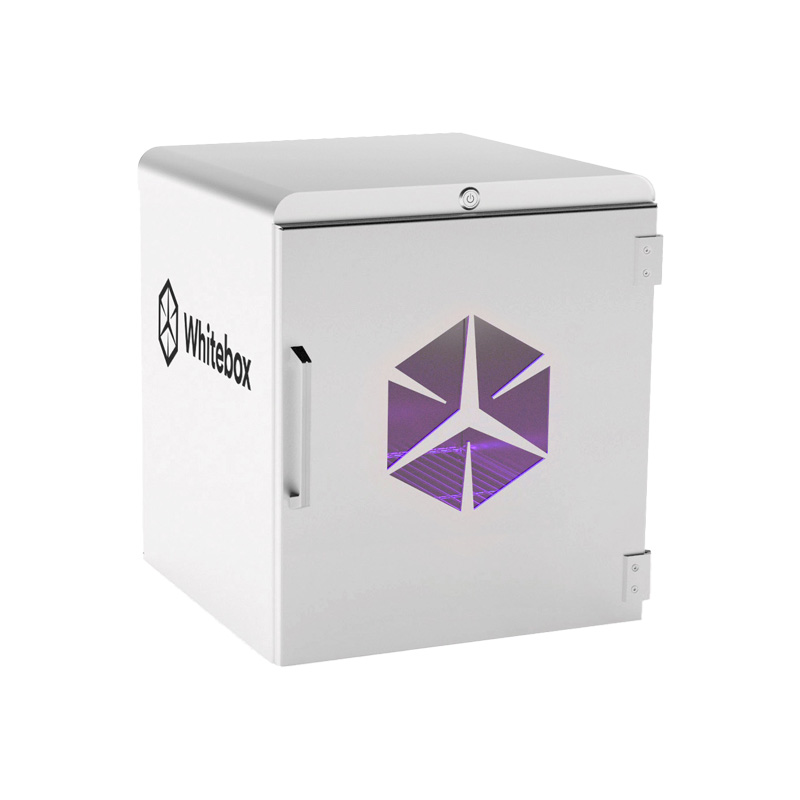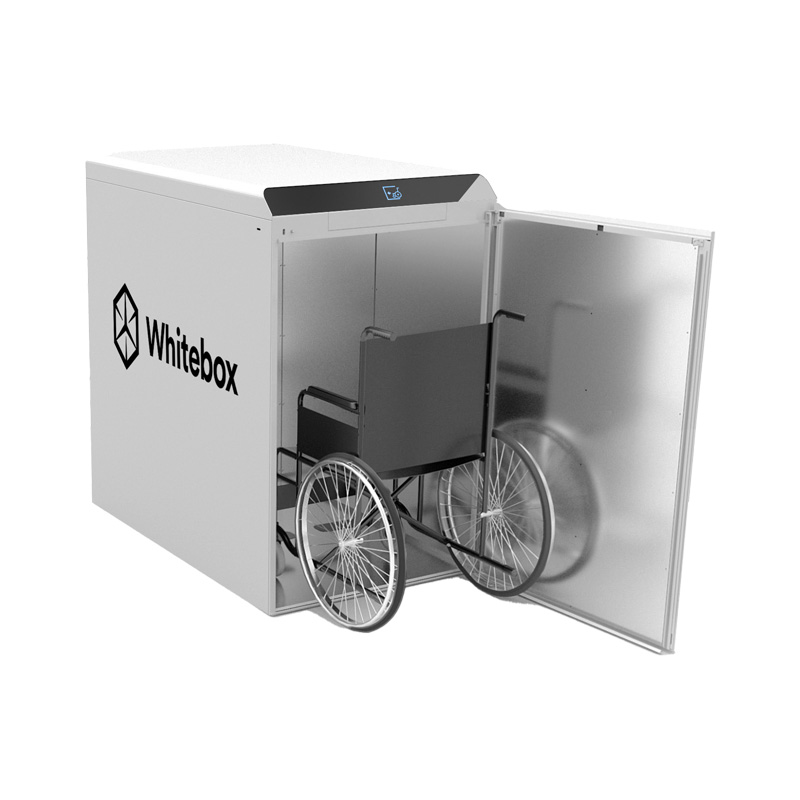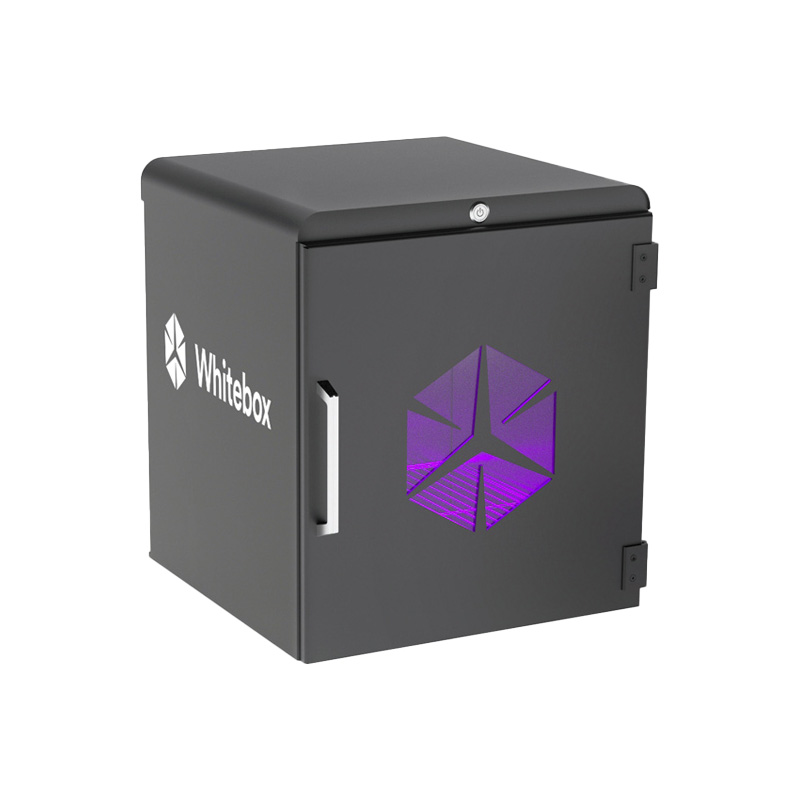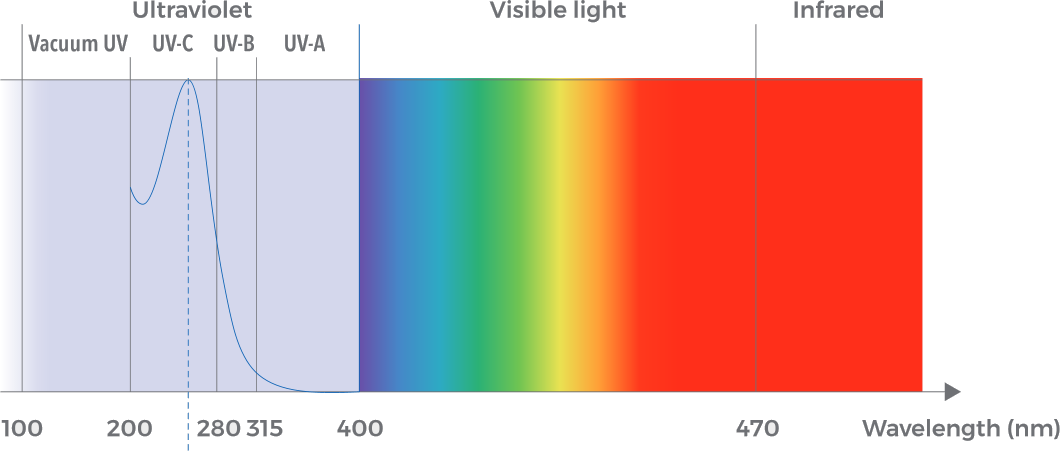Surface
Everyone who works in healthcare knows that disinfection of surfaces is very important for patient safety and the work environment. But it is work that takes time. And when done manually, human errors is always a risk – in the worst case, with disastrous consequences. Whitebox technology revolutionize surface disinfection. Through advanced and state-of-the-art technology that uses UV-C LED, the entire disinfection process is guaranteed to be safe, at the same it is super fast and frees up time for hospital staff. Minimizing use of chemicals for disinfection also means lower costs and a sustainable solution that is kind to our environment.

Whitebox Micro
TECHNICAL DATA
Material: Metal casing in powder painted surface finish
Colors: White
External dimensions (wxhxd): 220x247x306 mm
Inside dimension (wxhxd): 197x197x280 mm
Weight: 4,0 kg
Mounting: To be placed on table
Treatment time: 60 seconds, instant start
Light source: UV-C LED, 50 000 burn hours, No mercury
Mains input voltage: 100-240 V
Power use: 21W
Protection: IP20
![]()

Whitebox Mini
TECHNICAL DATA
Material: Metal casing in powder painted surface finish
Colors: White
External dimensions (wxhxd): 326x432x343 mm
Inside dimension (wxhxd): 300x377x340 mm
Weight: 6,0 kg
Mounting: To be placed on table
Treatment time: 60 seconds, instant start
Light source: UV-C LED, 50 000 burn hours, No mercury
Mains input voltage: 100-240 V
Power use: 21W
Protection: IP20
![]()

Whitebox Large
TECHNICAL DATA
Material: Metal outer casing with powder-painted structure finish Colors: White
External dimensions (wxhxd): 850x1360x1337 mm
Weight: 85 kg
Mounting: Standing on floor
Treatment time: 60 seconds, instant start
Light source: UV-C LED, 50 000 burn hours, No mercury
Mains input voltage: 100-240 V
Power use: 21W
Protection: IP20
![]()

Whitebox Mini VR
TECHNICAL DATA
Material: Metal casing in powder painted surface finish
Colors: White
External dimensions (wxhxd): 326x432x343 mm
Inside dimension (wxhxd): 300x377x340 mm
Weight: 6,0 kg
Mounting: To be placed on table
Treatment time: 60 seconds, instant start
Light source: UV-C LED, 50 000 burn hours, No mercury
Mains input voltage: 100-240 V
Power use: 21W
Protection: IP20
![]()
CHALLENGE
The problem of viruses and bacteria on surfaces is a well-known and concerning issue that has garnered widespread attention, especially in recent times. These microscopic pathogens can survive on various surfaces for extended periods, posing a significant threat to public health. One of the primary concerns is the ease with which these pathogens can be transmitted from contaminated surfaces to individuals, leading to infections and illness.
Viruses like the common cold, influenza but also more dangerous bacteria such as MRSA or those behind HAI can survive for a long time on materials and items. The problem is compounded by the fact that people frequently touch their faces, inadvertently introducing these pathogens into their bodies after contact with contaminated surfaces. The consequences of neglecting surface hygiene can be severe, leading to outbreaks of diseases and illnesses.
BENEFITS
Highly Effective Disinfection
UVC light is a powerful disinfectant that can inactivate a wide range of microorganisms, including bacteria, viruses, and fungi. It disrupts the DNA and RNA of these pathogens, rendering them incapable of reproducing or causing infections.
Chemical-Free
Unlike chemical disinfectants, UVC does not leave behind any chemical residues on surfaces, making it safe for use in various environments, including food preparation areas and healthcare settings. UVC technology can reduce the need for and reliance on chemical disinfectants, which can be harsh on surfaces, harmful to humans, and contribute to antimicrobial resistance.
Rapid Action
UVC light works quickly, with disinfection times typically ranging from seconds. This makes it a convenient option for disinfecting surfaces in real-time.
No Microbial Resistance
Pathogens cannot develop resistance to UVC light, as they can with some traditional disinfectants. This ensures its continued efficacy in the long term.
Environmentally Friendly
UVC disinfection does not produce harmful byproducts or contribute to environmental pollution, making it an eco-friendly choice for surface disinfection.
Versatility
UVC can be applied to a wide range of surfaces, including countertops and medical equipment, making it a versatile tool for maintaining hygiene in various settings.
Cost-Efficient
While the initial investment in UVC equipment can be higher, it often proves cost-effective in the long run due to reduced chemical usage, labor costs, and the prevention of costly outbreaks in healthcare and other high-risk environments.
TECHNOLOGY
UV-C Light
The wavelengths of UV-C light are shorter than those of visible light. Wavelengths are roughly between 180 nm and 280 nm. Microorganisms have week protection against UV-C and do not survive exposure. When exposed to UV-C, the RNA of bacteria and viruses are destroyed. This makes the technology significantly more secure and efficient when it comes to destroying bacteria, pathogens and various viruses without using toxic chemicals.
UV-C is effective, safe and cost effective. Evidents supports the role of UV-C light in successfully inactivating for example the SARS-CoV-2 Corona virus and MRSA commonly existing hospital environments.
UV-C has been used in healthcare, air, water, food, and biotech for over 30 years. UV light is categorized according to different wavelength between 200-280 NM.

48.10%
The number of positive test plates in a surgical setting from a total of 1 040 plate cultures from mattresses. Manual cleaning of surfaces is hard.
48.10%
The number of positive test plates in a surgical setting from a total of 1 040 plate cultures from mattresses. Manual cleaning of surfaces is hard.
Solutions
Whitebox disinfection box helps technical aid central
SURFACE
Every day, technical aid centrals handle thousands of medical equipment. They perform all from advice, purchase, ...
The energy company secures operations with Whitebox
SURFACE
The control center is a critical infrastructure operation with staffing around the clock on all days of the year. This makes the operations...
Installation of Whitebox technology at Shifa Al Orman Hospital
SURFACE
For the last few decades, hospitals have taken the hospital-acquired infections seriously. The reason is that hospital-acquired infections...


